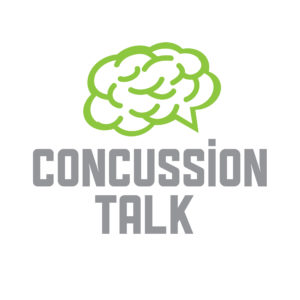I recently read a story in the Globe and Mail, “Stampeders backpedal on concussion talk” about Calgary QB Drew Tate who was hit in a head-to-head collision in the 2nd quarter of play on Sunday, November 11. At halftime, Tate said that he had his “bell rung” and couldn’t remember the first half of play, generating this comment from Eric Francis of the Calgary Sun, “All the questions Monday will and should revolve around the apparent silliness of letting Tate play after his halftime admission to TSN.” (emphasis added) Not to worry though, according to Tate all that really happened is that he was “dinged” and “felt some fuzziness”, besides, as Tate says, “As far as talk about a concussion, I didn’t get what the fuss was because I felt fine and just wanted to play.†The Stampeders administered concussion tests during the game, after the game, and Monday morning. Tate was ruled to be symptom free.
It seems fairly clear that Tate was concussed. However, not according to Dave Dickenson, Calgary’s offensive coordinator and a former QB, whose diagnosis was that  he “can tell when I look into someone’s eyes if they are concussed or not.†and he didn’t see any symptoms. Nevertheless, Chris Nowinski knows a thing or two about concussions, concussion management, and the long term effects. Chris Nowinski, of the Sports Legacy Institute and Boston University Center for the Study of Traumatic Encephalopathy and the man whose research and work really instigated the discourse on concussions in the NFL, disagreed and said that the best concussion diagnosis comes directly from the player. In this case, Tate himself said he was “dinged” (he also said he couldn’t remember the first half of play) and  Nowinski noted, “It doesn’t matter if he passed the sideline test. To put ‘dinged’ in the statement, you can be certain he had a concussion.â€
The CFLÂ ‘Concussion Card’Â reads like it was written for kids being rough in the school yard, not grown men, colliding repeatedly with power and intent (to knock the other guy down), wearing, essentially, full body armour.
I like scientific, research based evidence, it makes sense to me, and when it comes to human health, it has proven to be extremely effective, and consistently reliable. I trust empirical evidence. Football (especially) has been one big scientific experiment, taking Newton’s laws of motion, notably 2 and 3, and applying them to bigger and bigger humans bodies. I’ve written several times about the apparent inevitability of concussions in contact sports such as football and hockey, and no matter how much the  ‘protecting the brain’ mantra or concussion management policies are preached, the obviousness of concussions is never seen by everyone. Not everyone who’s hit in the head is knocked unconscious, but some are, and not everyone who’s been hit in a head-to-head collision on a football field or hockey rink has symptoms of a head injury, but many do. Nobody knows who those people are. Concussion tests are administered immediately and their results are taken as concrete evidence – even though many brain injury symptoms may not show up until much later. Of course athletes are going to say they feel ok! They want to play! Besides, the symptoms may not show up right away. Then again, is it fair if player x is forced to sit out even though they feel fine and don’t have any symptoms? Yes! Emphatically yes!  ‘Fair’ is often applied to the lone athlete. Fair doesn’t have to be re-defined, it has to be understood. If player x is hit in the head, passes all the concussion tests, so is then ushered back in the game and has no further symptoms, then what about player y who also receives a blow to the head, passes his/her concussion test and is then ushered back into the game, is hit again and ends up with devastating symptoms of a brain injury, such that the rest of their life is severely affected. Is that fair to player y?
Players in these hard hitting sports know what they’re getting themselves into. They may not appreciate the real dangers, but they know there are risks. They don’t want to sit out any time, ever. However, if they know that by sacrificing one game, or one week, will help ensure that more players can play for longer, and that life after the game won’t be fraught with trips to the doctor, then you’ll see a change in attitude.

Leave a Reply